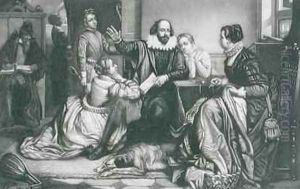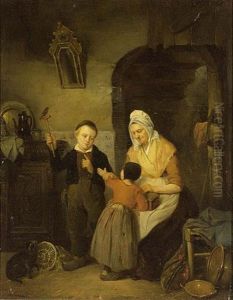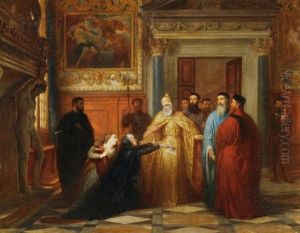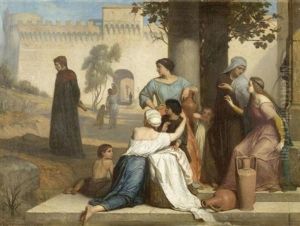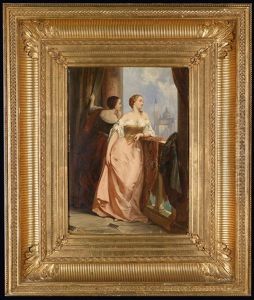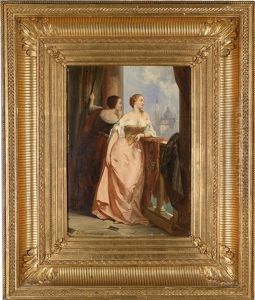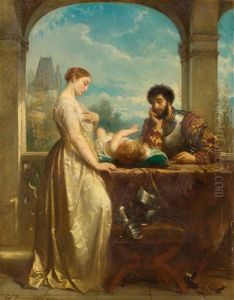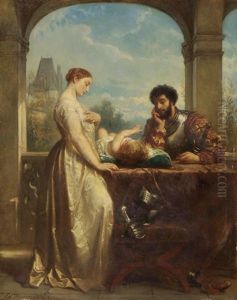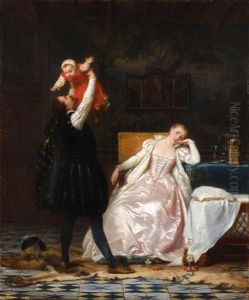Edouard Jean Conrad Hamman Paintings
Édouard Jean Conrad Hamman, born in Ostend, Belgium on June 13, 1820, was a 19th-century painter and lithographer known for his historical and genre scenes. His artworks often depicted moments from the lives of famous individuals or everyday scenes enriched with historical or literary significance. Hamman's talent for capturing the sentiments of the past through the lens of the present made him a notable figure in the art world during his lifetime.
Hamman received his artistic training in his home country at the Academy of Fine Arts in Antwerp under the guidance of Gustave Wappers, a prominent Romantic painter. Wappers' influence on young Hamman was significant, as seen in the emotive qualities and dramatic compositions of Hamman's later works. He continued his studies in Paris, where he was deeply inspired by the works of French artists and the rich cultural atmosphere of the city.
During his career, Hamman was a versatile artist who worked in various media, including oil painting and lithography. His subject matter ranged from historical events and personages to scenes of contemporary life. One of his masterpieces is 'Columbus and His Son at La Rabida,' which portrays Christopher Columbus seeking refuge in the La Rabida Monastery with his son. This painting, like many others by Hamman, is characterized by meticulous attention to detail and a vivid narrative quality.
Hamman's works were exhibited in multiple Salons in France, and he received critical acclaim for his ability to breathe life into historical events and figures. His legacy includes not only his paintings but also his contributions to lithography, through which he was able to reach a wider audience with his historical representations.
Édouard Jean Conrad Hamman passed away on August 10, 1888, in Paris, France. His art remains a testament to his skill in bridging the gap between the past and the present, offering viewers a chance to experience history through the eyes of a 19th-century artist. Hamman's work continues to be studied and appreciated for its historical value and artistic merit.


